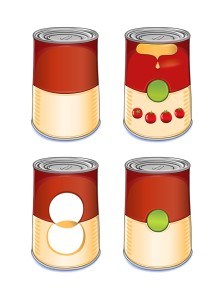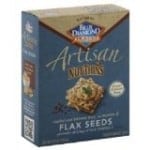Gluten (Latin word for “glue”) is the substance that gives bread its airy and spongy texture and dough its sticky texture. Gluten is an inflammatory protein found in many grains such as wheat, semolina, spelt, kamut, rye, and barley.
But gluten was not always a part of our food supply. You can read more about it here.
Were you aware that there can be gluten in food and ingredients you would never expect it to be? The truth is, gluten is found in almost everything from food products to cosmetics (lipstick is a big one) and raw materials used in condiments, vitamins, and medication.
Unfortunately, our government does not mandate that gluten be labeled on packages. Some companies elect to disclose on the label that a product is gluten free; however, gluten free does not mean it is “free of gluten” which is confusing to say the least!
I always look for the “certified gluten free” label on packaged goods, but I still read the label of ingredients.
Gluten is often hidden under names such as hydrolyzed vegetable protein, modified food starch, or vegetable protein.
Having celiac disease in addition to gluten intolerance myself, I am committed for life to raising awareness and pursuing research because as is the case for many people with Hashimoto’s, gluten exacerbates my autoimmune disease…I call the resurgence of symptoms “mini autoimmune attacks.”
Gluten simply isn’t worth the 9-10 months of relapse, return of hypo symptoms or progression of the disease.
If avoiding gluten can prevent a relapse as is often the case, why take chances?
I read an article yesterday by someone who said gluten no longer has any effect on them and they outlined a laundry list of what would be obvious symptoms, i.e. bloating, gas, skin issues and more.
Here’s a questions to consider: can you “feel” what your TPO antibodies are doing? Of course not!
If you have Hashimoto’s or Graves’ (or any autoimmune condition)…
The disappearance of obvious or outward signs and symptoms that appear after ingesting gluten is not a logical rationale to assume you can start eating gluten again!
Please be mindful of the information out there. Just because you don’t notice or feel any obvious signs and symptoms of gluten exposure doesn’t mean it’s OK to consume gluten…especially if you have Hashimoto’s, celiac or other autoimmune illnesses! Only a blood test can detect what’s going on with the TPO antibodies and an attack against your thyroid gland.
So, here is a list that I hope will help you to navigate the ambiguous world of gluten. These are foods or products to avoid to make sure you aren’t accidentally ingesting gluten masked by another name that isn’t obvious to you on the label. I have even seen these ingredients on labels that also contained a “gluten free” label on the box! So…be aware and know what you’re consuming if you have Hashimoto’s, Graves, Celiac, gluten intolerance or other autoimmune conditions.
Restaurant Scrambled Eggs and Omelets

Imitation Crabmeat

Canned Soups

Ice Cream and Ice Cream Cakes

Rice and Almond Crackers
Packaged crackers and similar products are confusing! Just because the box says it is made with rice or almonds in no way means it doesn’t contain wheat flour as well. Always read labels! Unless these products are manufactured in a dedicated gluten free facility, cross-contamination with nuts, gluten, wheat, soy, corn, and other common allergens is highly likely. Try these delicious homemade crackers from cauliflower here!
Troublesome Ingredients
- Artificial color
- Baking powder
- Caramel color/flavoring
- Citric acid (can be fermented from wheat, corn, molasses or beets)
- Coloring
- Dextrins
- Diglycerides
- Emulsifiers
- Enzymes
- Fat replacers
- Flavorings
- Food starch
- Glucose syrup
- Glycerides
- Maltodextrin
- Malt syrup
- Modified food starch
- Natural juices
- Red dye #3
- Soy sauce
- Stabilizers
- Starch
- Wheat starch
This is not an all-inclusive list however it includes the main ones for hidden sources of gluten.
Be aware these can also be lurking in your beauty and skin care products, condiments, household products and foods you don’t usually associate with wheat or gluten. Keep this list with you and learn to recognize hidden sources of gluten.
Read Next: Steps to Take after Accidentally Getting Glutened
